Champagne
Champagne is a sparkling wine produced by inducing the
in-bottle secondary fermentation of the
wine to effect carbonation. It is produced exclusively within the Champagne region
of France, from which it takes its name. Through international
treaty, national law, most countries limit the use of the term to only those
wines that come from the Champagne appellation. In Europe, this principle is enshrined in the European
Union by Protected Designation of
Origin (PDO) status. Other countries, such as the
United States, have recognized the exclusive
nature of this name, yet maintain a legal structure that allows longtime
domestic producers of sparkling wine to continue to use the term "Champagne"
under specific circumstances.
  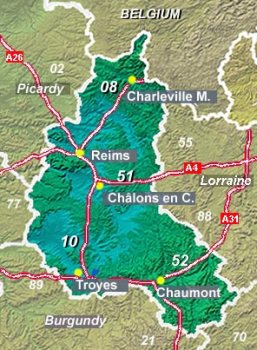
Champagne first gained world renown because of its association with the
anointment of French kings. Royalty from throughout Europe spread the message of
the unique sparkling wine from Champagne and its association with luxury and
power. The leading manufacturers devoted considerable energy to creating a
history and identity for their wine, associating it and themselves with nobility
and royalty. Through advertising and packaging they sought to associate
champagne with high luxury, festivities and rites of passage. Their efforts
coincided with an emerging middle class that was looking for ways to spend its
money on symbols of upward mobility.
Origins

Jean Francois de
Troy's 1735 painting Le Déjeuner d'Huîtres (Luncheon with
Oysters) is the first known depiction of champagne in painting.
The Romans were the first to
plant vineyards in this area of northeast France with the region being
cultivated by at least the 5th century, possibly earlier. Wines from the
Champagne region were known before medieval times. Churches owned vineyards and monks produced wine for use in the sacrament of
Eucharist. French
Kings were traditionally anointed in
Reims and champagne wine was served as part of
coronation festivities. The Champenois
were envious of the reputation of the wines made by their
Burgundian neighbors to the south and
sought to produce wines of equal acclaim. However the northerly climate of the
region gave the Champenois a unique set of challenges in making red wine. At the
far extremes of sustainable viticulture, the grapes would struggle to ripen fully and often
would have bracing levels of acidity and low sugar levels. The wines would be lighter
bodied and thinner than the Burgundy wines they
were seeking to outdo.
The English scientist and physician Christopher
Merret documented the addition of sugar to a
finished wine to create a second fermentation six years before Dom
Perignon set foot in the Abbey of
Hautvillers and almost 40 years before it
was claimed that the famed Benedictine monk invented champagne. Contrary to
legend and popular belief, Dom Perignon did not invent sparkling
wine. Merrett presented the Royal Society with a paper in which he detailed what is now called
methode champenoise in
1662.
Although the French monk Dom Perignon (1638-1715) did not
invent champagne, it is true he developed many advances in the production of
this beverage, including holding the cork in place with a wire collar to
withstand the fermentation pressure. In France, the first sparkling champagne
was created accidentally; its pressure led it to be called "the devil's wine"
(le vin du diable) as bottles exploded or the cork jolted away. Even when it was
deliberately produced as a sparkling wine, champagne was for a very long time
made by the méthode rurale, where the wine was bottled before the only
fermentation had finished. Champagne did not utilize the methode champenoise
until the 19th century, 300 years after
Christopher Merret documented the process. The
nineteenth century saw an explosive growth in champagne production going from a
regional production of 300,000 bottles a year in 1800 to 20 million bottles in
1850.
In the 1800s champagne was noticeably sweeter than the
champagne of today. The trend towards drier champagne began when
Perrier-Jouet decided not to sweeten his 1846
vintage prior to exporting it to London. The designation Brut champagne, the
modern champagne, was created for the British in 1876.
Champagne and the law
The Champagne winemaking community, under the auspices of the
Comite Interprofessionel du Vin de Champagne , has developed a comprehensive set of rules and
regulations for all wine produced in the region to protect its economic
interests. They include codification of the most suitable growing places; the
most suitable grape types (most champagne is a blend of up to three grape
varieties, though other varieties are allowed); and a lengthy set
of requirements specifying most aspects of viticulture. This includes pruning, vineyard yield, the degree of
pressing, and the time that wine must remain on its lees before bottling. It can also limit the release of
champagne to market to maintain prices. Only when a wine meets these
requirements may it be labelled champagne. The rules agreed upon by the CIVC are
submitted for the INAO's final approval.
The government organization that controls wine appellations in
France, the Institut National des Appellations d'Origine , is preparing to make the largest revision of the
region's legal boundaries since 1927, in response to economic pressures. With
soaring demand and limited production of grapes, champagne houses say the rising
price could produce a consumer backlash that would harm the industry for years
into the future. That, along with political pressure from villages that want to
be included in the expanded boundaries, led to the move.
Use of the word "Champagne"
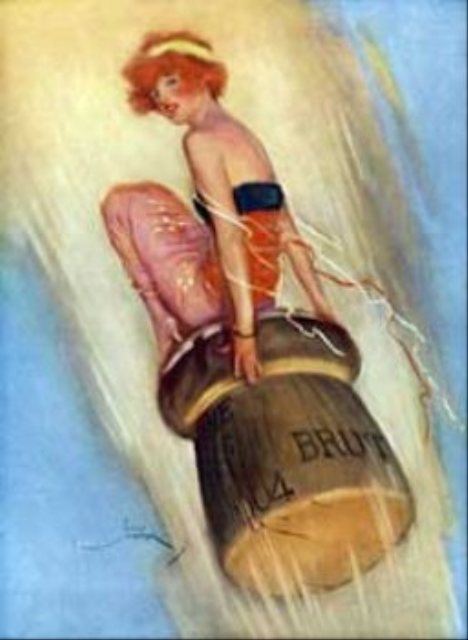
1915 English magazine illustration of a
lady riding a champagne cork. From The Lordprice
Collection.
Regardless of the legal requirements for labeling, extensive
education efforts by the Champagne region and the use of alternative names by
non-Champagne quality sparkling wine producers, some consumers continue to
regard champagne as a generic term for white sparkling wines, regardless of
origin. The laws described here were intended to reserve the term as a
designation of origin. In the European Union and many other countries, the name
Champagne is legally protected by the Treaty of Madrid
(1891) designating only the sparkling wine produced in the eponymous region
and adhering to the standards defined for it as an Appellation d'origine
contrlee; the right was reaffirmed in the Treaty of
Versailles after World War I. This legal protection has been
accepted by numerous other countries worldwide. Most recently Canada, Australia
and Chile signed agreements with Europe that will limit the use of the term
champagne to only those products produced in the Champagne region. The United
States allows use of the semi-generic term champagne on the label of
their sparkling wines but requires the wine's actual origin to be listed on the
label
Even the term méthode champenoise or champagne method was
forbidden consequent to an EU court decision in 1994. As of 2005, the
description most often legally used for sparkling wines not from Champagne yet
using the second fermentation in the bottle process is méthode traditionnelle.
Sparkling wines are produced worldwide, and many producers use special terms to
define them: Spain uses Cava , Italy designates it
spumante, and South Africa uses Cap
Classique. An Italian sparkling wine made
from the Muscat grape uses the DOCG Asti. In
Germany, Sekt is a common sparkling wine. Other French wine regions
cannot use the name champagne, i.e. Burgundy and Alsace produce Cremant. Sparkling wines mislabelled champagne can be and often
are seized and destroyed by legal authorities.
The village of Champagne, Switzerland has traditionally made a still wine labelled as
"champagne", the earliest records of viticulture dated to 1657. In an accord
with the EU, the Swiss government conceded in 1999 that by 2004 the village
would phase out use of the name. Sales dropped from 110,000 bottles a year to
32,000 after the change. In April 2008 the villagers resolved to the fight
against the restriction following a Swiss open-air
vote.
Production

Le Remueur: 1889 engraving of the
man engaged in the laborious daily task of turning each bottle a fraction
Méthode Champenoise is the traditional method by which
champagne is produced. After primary fermentation and bottling, a second alcoholic fermentation occurs in
the bottle. This second fermentation is induced by adding several grams of yeast
(usually Saccharomyces cerevisiae, although each brand has its own
secret recipe) and several grams of rock sugar. According to the Appellation
d'Origine Controlee a minimum of 1.5 years is required to completely
develop all the flavour. For years where the harvest is exceptional, a millesimé
is declared. This means that the champagne will be very good and has to mature
for at least 3 years. During this time the champagne bottle is sealed with a
crown cap similar to that used on beer bottles.
After ageing, the bottle is manipulated, either manually or
mechanically, in a process called remuage (riddling, in English), so that the
lees settle in the neck of the bottle. After chilling the bottles, the
neck is frozen, and the cap removed. The pressure in the bottle forces out the
ice containing the lees, and the bottle is quickly corked to maintain the carbon
dioxide in solution. Some syrup is added to maintain the level
within the bottle.
Bubbles

An initial burst of effervescence occurs when the champagne
contacts the dry glass on pouring. These bubbles may form on imperfections in
the glass that facilitate nucleation or on cellulose fibres left
over from the wiping/drying process as shown by Gérard Liger-Belair, Richard
Marchal, and Philippe Jeandel with a high-speed video
camera. However, after the initial rush, these naturally occurring
imperfections are typically too small to consistently act as nucleation points
as the surface tension of the liquid smooths out these minute irregularities.
The nucleation sites that act as a source for the ongoing effervescence are not
natural imperfections in the glass, but actually occur where the glass has been
etched by the manufacturer or the customer. This etching is typically done with
acid, a laser, or a glass etching tool from a craft shop to provide nucleation
sites for continuous bubble formation (note that not all glasses are etched in
this way)
Dom Perignon was originally charged by his superiors at
the Abbey of Hautvillers to get rid of the bubbles since the pressure
in the bottles caused many of them to burst in the cellar. As sparkling wine
production increased in the early 1700s, cellar workers would have to wear heavy
iron mask that resembled a baseball catcher's mask to prevent
injury from spontaneously bursting bottles. The disturbance caused by one
bottle's disintegration could cause a chain reaction, with it being routine for
cellars to lose 20-90% of their bottles to instability. The mysterious
circumstance surrounding the then unknown process of fermentation and carbonic
gas caused some critics to call the sparkling creations "The Devil's Wine".
Champagne producers
There are more than one hundred champagne houses and 19,000
smaller vignerons (vine-growing producers) in Champagne. These companies manage
some 32,000 hectares of vineyards in the region. The type of champagne producer
can be identified from the abbreviations followed by the official number on the
bottle:
NM: Négociant manipulant. These companies (including the
majority of the larger brands) buy grapes and make the wine
CM: Coopérative de manipulation.
Co-operatives that make wines from the growers who are members, with
all the grapes pooled together
RM: Récoltant manipulant. (Also known as Grower
Champagne ) A grower that also makes wine from its own grapes (a
maximum of 5% of purchased grapes is permitted). Note that co-operative members
who take their bottles to be disgorged at the co-op can now label themselves as
RM instead of RC.
SR: Société de récoltants. An association of growers making
a shared Champagne but who are not a co-operative
RC: Récoltant coopérateur. A co-operative member selling
Champagne produced by the co-operative under its own name and label
MA: Marque auxiliaire or Marque d'acheteur. A brand name
unrelated to the producer or grower; the name is owned by someone else, for
example a supermarket
ND: Négociant distributeur. A wine merchant selling under
his own name
Marketing Champagne
The popularity of champagne is attributed to the success of
champagne producers in marketing the wine. Champagne houses promoted the wine's
image as a royal and aristocratic drink.
Laurent-Perrier's advertisements in late 1890
boasted their champagne was the favourite of King Leopold II of
Belgium, George I of Greece, Alfred, Duke of
Saxe-Coburg and Gotha, Margaret Cambridge, Machioness of
Cambridge, and John Lambton, 3rd Earl of
Durham, among other nobles, knights, and military officers.
Despite this royal prestige, champagne houses also portrayed champagne as a
luxury enjoyable by anyone, for any occasion. This strategy worked, and, by the
turn of the twentieth century, the majority of champagne drinkers were middle
class.
In the 19th century, champagne producers made a concentrated
effort to market their wine to women. This was in stark contrast to the
traditionally "male aura" that the wines of France had—particularly
Burgundy and Bordeaux. Laurent-Perrier again took the
lead in this area with advertisements touting their wine's favour with the
Countess of Dudley, the wife of the 9th Earl of
Stamford, the wife of the Baron
Tollemache, and the opera singer Adelina
Patti. Champagne labels were designed with images of romantic love and
marriage as well as other special occasions that were deemed important to women,
such as the baptism of a child.
In some advertisements, the champagne houses catered to
political interest such as the labels that appeared on different brands on
bottles commemorating the centennial anniversary of the French
Revolution of 1789. On some labels there were flattering images of
Marie-Antoinette that appealed to the conservative factions of French
citizens that viewed the former queen as a martyr. On other labels
there were stirring images of Revolutionary scenes that appealed to the liberal
left sentiments of French citizens. As World War I loomed, champagne
houses put images of soldiers and countries' flags on their bottles, customizing
the image for each country to which the wine was imported. During the Dreyfus
Affair, one Champagne house released a Champagne Antijuif with
anti-Semitic advertisements to take advantage of the wave of
anti-Semitism that hit parts of France.
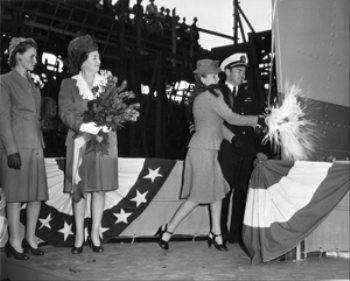 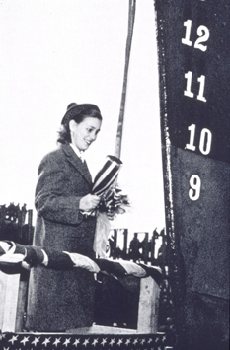 
Champagne is typically drunk during
celebrations. It is also used to launch
ships when a bottle is smashed over the hull during the ship's launch. If
the bottle fails to break this is often thought to be bad luck.
Grape varieties and styles
Champagne is a single Appelation d'Origine
Controlee . As a general rule, grapes used must be the white
Chardonnay, or the dark-skinned "red wine grapes" Pinot
Noir or Pinot Meunier. Due to the gentle pressing of the grapes
and absence of skin contact during fermentation, the dark-skinned varieties also
yield a white wine. Most Champagnes are made from a blend of Chardonnay and
Pinot Noir, for example 60%/40%. Blanc de blanc ("white from white") Champagnes
are made from 100% Chardonnay. Possibly the most exquisite, and definitely the
most expensive of these is grown in a single Grand cru vineyard in Le
Mesnil-Sur-Oger for Salon. Blanc de noir ("white from black") Champagne is
pressed from Pinot Noir, Pinot Meunier or a mix of the two.
There are several other grape varieties permitted for
historical reasons, however, but rare in current usage. The sparsely cultivated
varieties (0.02% of the total vines planted in Champagne) of
Arbanne , Petit Meslier and Pinot
Blanc, may still be found in modern cuvées. While the directives of
INAO make conditional allowances according to the complex laws of 1927
and 1929, and plantings made prior to 1938. The complete list of the nine actual
and theoretical varieties reads Pinot Noir, Pinot Meunier, Chardonnay, Pinot
Blanc, Arbanne, Petit Meslier, Pinot gris (in Champagne named
Fromenteau), Pinot de juillet and Pinot rose. The
Gamay vines of the region were scheduled to be uprooted by 1942, but due
to World War II, this was postponed until 1962.
The dark-skinned Pinot Noir and Pinot Meunier give the wine its
length and backbone. They are predominantly grown in two areas - the Montagne de
Reims and the Valée de la Marne. The Montagne de Reims run east-west to the
south of Reims, in northern Champagne. They are notable for north-facing chalky
slopes that derive heat from the warm winds rising from the valleys below. The
River Marne runs west-east through Champagne, south of the Montagne de Reims.
The Valée de la Marne contains south-facing chalky slopes. Chardonnay gives the
wine its acidity and biscuit flavour. Most Chardonnay is grown in a
north-south-running strip to the south of Epernay , called the Côte des
Blanc, including the villages of Avize, Oger and Le Mesnil-Sur-Oger. These are
east-facing vineyards, with terroir similar to the Cote de
Beaune. The various terroirs account for the differences in
grape characteristics and explain the appropriateness of blending juice from
different grape varieties and geographical areas within Champagne, to get the
desired style for each Champagne house.

An Edwardian Advert.
Types of Champagne
Most of the Champagne produced today is
"Non-vintage", meaning that it is a blended product of grapes from
multiple vintages. Most of the base will be from a single year vintage with
producers blending anywhere from 10-15% (even as high as 40%) of wine from older
vintages. If the conditions of a particular vintage are favourable, some
producers will make a "Vintage" wine that must be composed of at least 85% of
the grapes from vintage year. Under Champagne wine regulations, houses that make
both vintage and non-vintage wines are allowed to use no more than 80% of the
total vintage's harvest for the production of vintage Champagne. This allows at
least 20% of the harvest from favourable vintages to be reserved for use in
non-vintage Champagne. In less than ideal vintages, some producers will produce
a wine from only that single vintage and still label it as non-vintage rather
than as "vintage" since the wine will be of lesser quality and the producers
have little desire to reserve the wine for future blending.
Prestige cuvée. A cuvée de prestige is a proprietary
blended wine (usually a Champagne) that is considered to be the top of a
producer's range. Famous examples include Louis
Roederer's Cristal,
Laurent-Perrier's Grand Siecle, Moet &
Chandon's Dom Perignon, and Pol
Roger's Cuvee Sir Winston Churchill. The original prestige cuvée
was Moët & Chandon's Dom Pérignon, launched in 1936 with the 1921 vintage.
Until then, Champagne houses produced different cuvées of varying quality, but a
top-of-the-range wine produced to the highest standards (and priced accordingly)
was a new idea. In fact, Louis Roederer had been producing Cristal since 1876,
but this was strictly for the private consumption of the Russian
tsar. Cristal was made publicly available with the 1945 vintage. Then
came Tattinger's Comtes de Champagne (first vintage 1952), and
Laurent-Perrier's Grand Siècle 'La Cuvée' in 1960, a blend of three vintages
(1952, 1953, and 1955). In the last three decades of the twentieth century, most
Champagne houses followed these with their own prestige cuvées, often named
after notable people with a link to that producer (Veuve Clicquot's La Grande
Dame, the nickname of the widow of the house's founder's son; Pol Roger's Cuvée
Sir Winston Churchill, named for the British prime
minister; and Laurent-Perrier's Cuvée Alexandra rosé, to name
just three examples), and presented in non-standard bottle shapes (following Dom
Pérignon's lead with its eighteenth-century revival design).
Blanc de noirs. A French term (literally "white of blacks")
for a white wine produced entirely from black grapes. It is often encountered in
Champagne, where a number of houses have followed the lead of
Bollinger's prestige cuvée Vieilles Vignes Françaises in
introducing a cuvee made from either Pinot Noir, Pinot Meunier or a blend
of the two (these being the only two black grapes permitted within the Champagne
AOC appellation). Although Bollinger's wine is famed for its intense
richness and full-bodied nature, this has more to do with the way the grapes are
planted and when they are harvested than any intrinsic property of blanc de
noirs Champagne, which is often little different from cuvées including a
proportion of Chardonnay.
Blanc de blancs. A French term that means "white of
whites", and is used to designate champagnes made exclusively from Chardonnay
grapes. The term is occasionally used in other sparkling wine-producing regions,
usually to denote Chardonnay-only wines rather than any sparkling wine made from
other white grape varieties.
Rosé Champagne. The rose wines of Champagne
are produced either by leaving the clear juice of black grapes to
macerate on its skins for a brief time or, more commonly, by
adding a small amount of still Pinot noir red wine to the sparkling wine cuvee.
Champagne is typically light in colour even if it is produced with red grapes,
because the juice is extracted from the grapes using a gentle process that
minimizes the amount of time the juice spends in contact with the skins, which
is what gives red wine its colour. Rosé champagne is one of the few wines that
allows the production of Rosé by the addition a small amount of red wine during
blending. This ensures a predictable and reproducible colour, allowing a
constant Rosé colour from year-to-year.
Sweetness
The amount of sugar (dosage) added after the second
fermentation and aging varies and will dictate the sweetness level of the
Champagne.
Brut Natural or Brut Zéro (less than 3 grams of sugar per
litre)
Extra Brut (less than 6 grams of sugar per litre)
Brut (less than 15 grams of sugar per litre)
Extra Sec or Extra Dry (12 to 20 grams of sugar per litre)
Sec (17 to 35 grams of sugar per litre)
Demi-Sec (33 to 50 grams of sugar per litre)
Doux (more than 50 grams of sugar per litre)
The most common is brut, although throughout the 19th century
and into the early 20th century champagne was generally much sweeter than it is
today.
Champagne bottles

Side-by-side comparison of champagne bottles (L to R) On ladder magnum (1.5 litres), full (0.75 litre), half (0.375 litre),
quarter (0.1875 litre). On floor: Balthazar (12 litres), Salmanazar (9 litres), Methuselah (6 litres), Jeroboam (3 litres).
Champagne is mostly fermented in two sizes of bottles, standard
bottles (750 mL ), and magnums (1.5
L). In general, magnums are thought to be
higher quality, as there is less oxygen in the bottle, and the volume to surface
area favours the creation of appropriately-sized bubbles. However, there is no
hard evidence for this view. Other bottle sizes, named for Biblical figures, are
generally filled with champagne that has been fermented in standard bottles or
magnums. Sizes larger than Jeroboam (3.0 L) are rare. Primat sized bottles (27
L) - and as of 2002 Melchizedek sized bottles (30 L) - are exclusively offered
by the House Drappier. The same names are
used for bottles containing wine and port; however Jeroboam, Rehoboam and
Methuselah refer to different bottle volumes. Unique sizes have been made for
special occasions and people, the most notable example perhaps being the 20
fluid ounce / 60 cL. bottle (Imperial pint) made specially for Sir Winston
Churchill by Pol Roger.
Champagne corks

Champagne corks are built from several sections and are
referred to as agglomerated corks. The mushroom shape that occurs in the
transition is a result of the bottom section, which is in contact with the wine,
being composed of two stacked discs of pristine cork, cemented to the upper
portion which is a conglomerate of ground cork and glue. Prior to insertion, a
sparkling wine cork is almost 50% larger than the opening of the bottle.
Originally they start as a cylinder and are compressed prior to insertion into
the bottle. Over time their compressed shape becomes more permanent and the
distinctive "mushroom" shape becomes more apparent. The aging of the champagne
post disgorgement can to some degree be told by the cork, as the longer it has
been in the bottle the less it returns to its original cylinder shape.
Champagne etiquette
Champagne is usually served in a champagne
flute , whose characteristics include a long stem
with a tall, narrow bowl, thin sides and an etched bottom.
Riedel makes such glasses for vintage and
non-vintage champagnes. Other manufacturers have copied Riedel's design and make
similar, more affordable flutes. The Victorian coupe (according to legend,
approximating the breast of Marie Antoinette) is not recommended as it disperses the nose and
over-oxygenates the wine. Champagne is always served cold, its ideal drinking
temperature at 7 to 9 °C (43 to 48 °F). Often the bottle is chilled in a bucket
of ice and water before opening. Champagne buckets are made specifically for
this purpose, and often have a larger volume than standard wine-cooling buckets
(to accommodate the larger bottle, and more water and ice).
Opening Champagne bottles
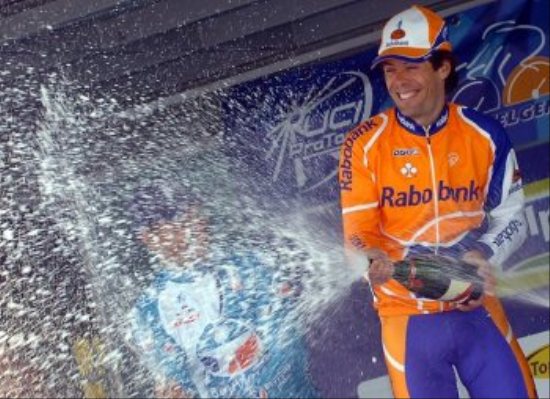 
Champagne has been an integral part of sports celebration since Moet et
Chandon started offering their champagne to the
winners of Formula I Grand Prix events. At the 1967 24 Hours of Le
Mans, winner Dan Gurney started the tradition of spraying the crowd and each
other. However, this opening will waste much of the champagne. To reduce the
risk of spilling champagne and/or turning the cork into a dangerous
projectile, a champagne bottle can be
opened by holding the cork and rotating the bottle (rather than the cork). By
using a 45 degree angle, the surface of the champagne has the maximum surface
area, thus minimizing the excessive bubbling. The cork can ease out with a sigh
or a whisper rather than a pop. The flavour will be
largely the same, irrespective of the method used, but the volume left in the
bottle will differ. The whispering noise made while opening the bottle is
sometimes named "le soupir amoureux" (loving whisper).
 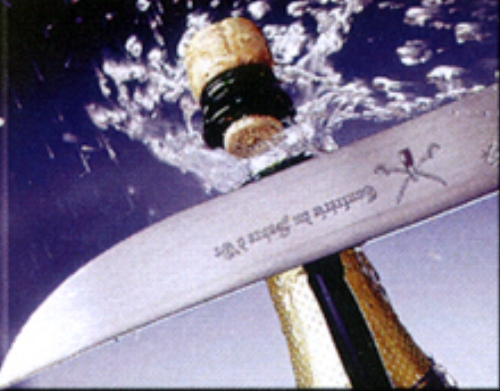
A sabre can be used to open
a champagne bottle with great ceremony. This technique is called sabrage (the term is also
used for simply breaking the head of the bottle).
Health benefits
In April 18, 2007, the Journal of Agricultural and Food
Chemistry published the results of a
recent joint study by the University of Reading and University of Cagliari that showed moderate consumptions of champagne may help
the brain cope with the trauma of
stroke, Alzheimer's, and Parkinson's disease. The research noted that the high amount of the
antioxidant polyphenols in sparkling wine can help
prevent deterioration of brain cells due to oxidative stress. During the study scientist exposed two groups of
mice with blanc de blancs (100% Chardonnay
composition) and blanc de noir (Pinot Noir and Pinot Meunier based) and a
control group with no exposure to champagne. All groups were then subjected to
high levels of neurotoxicity similar to what the
human brain experiences during inflammatory conditions. The study found that the groups pretreated
with exposure to Champagne had a higher level of cell restoration compared to
the group that wasn't. The study's co-authors noted that it was too early to
conclusively say that drinking champagne is beneficial to brain health but that
the study does point researchers to more exploration in this area. It is a
common perception that people become intoxicated more quickly on champagne. It
has been shown that alcohol is more rapidly absorbed when mixed with carbonated
water, and this may explain this anecdotal assertion.
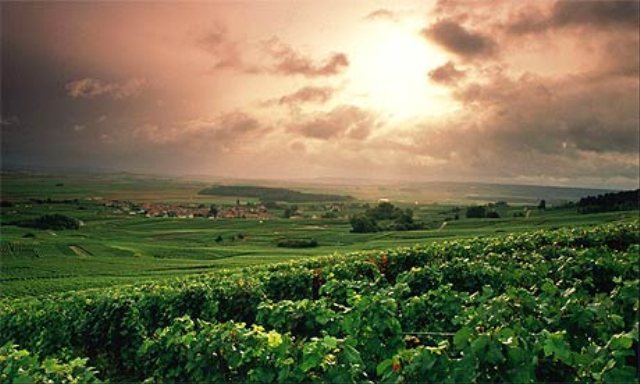
ALL IN ALL a great way
to celebrate.
|


















